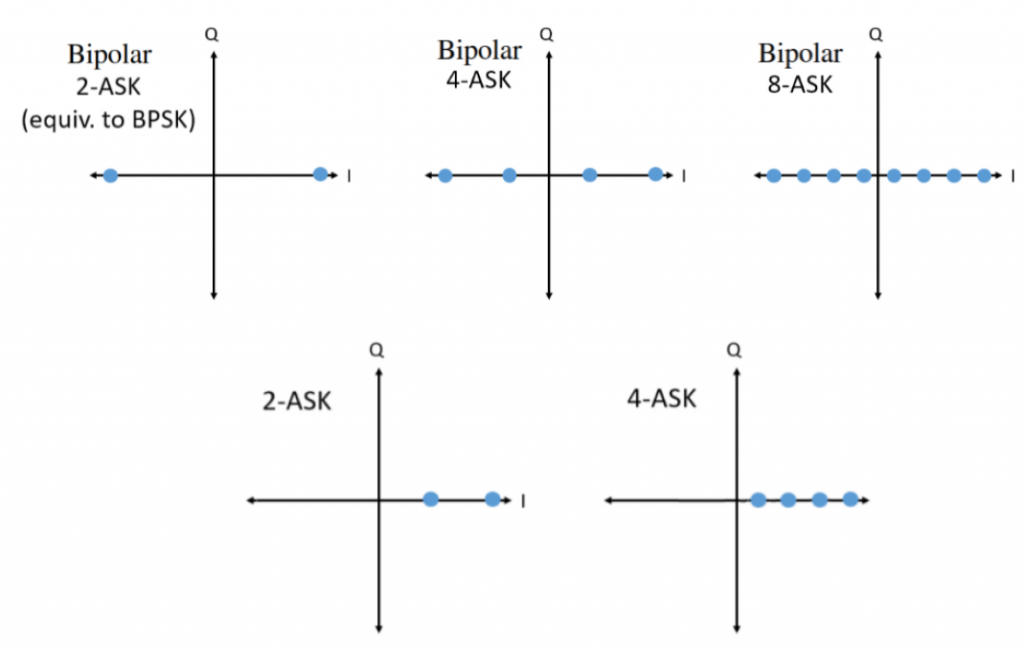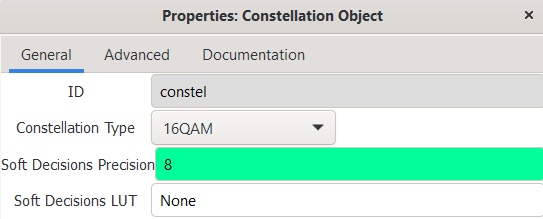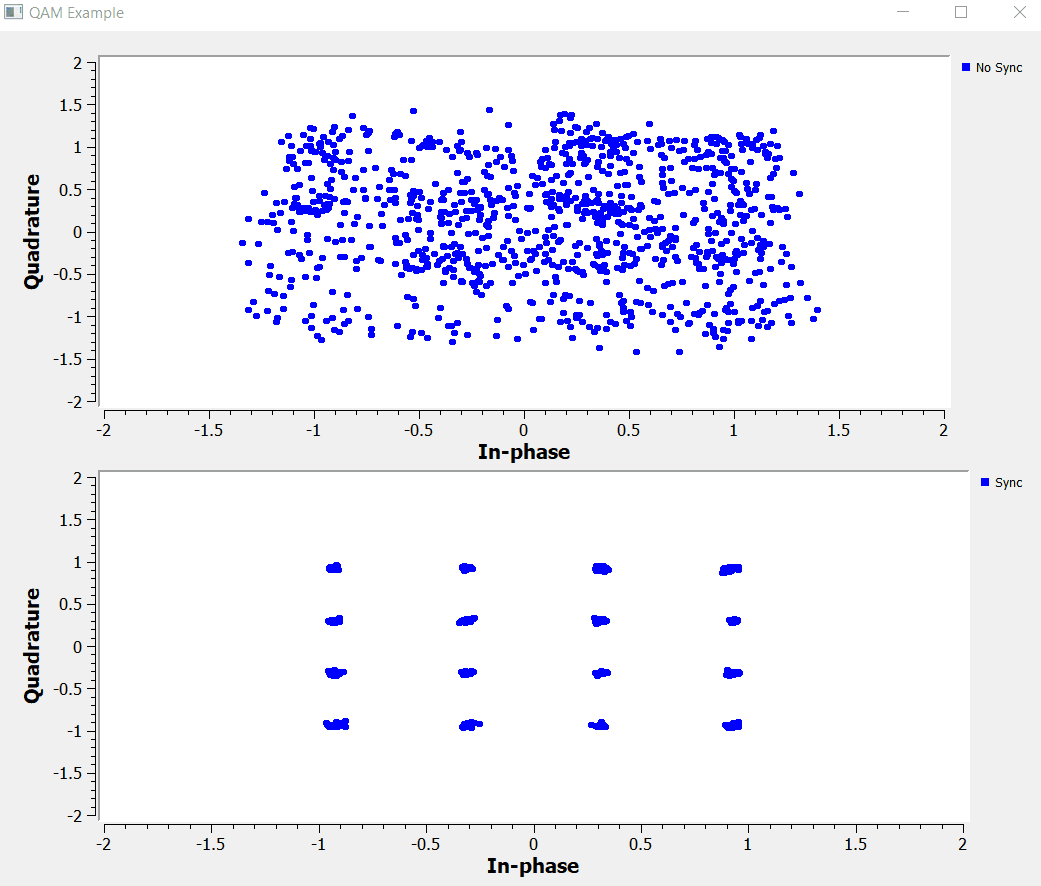
QAM Modulations
This article focus on Quadrature Amplitude Modulation (QAM), which belongs to a digital modulation scheme available to transmit digital data.
Note: The article combines mathematical expressions with visuals with the goal to help understanding the concepts from different perspectives. The goal by presenting math equations is not to overwhelm the reader but rather an attempt to connect the theory with the practical world.
QAM Modulation
During the "ASK Modulation" section we covered a way to modulate digital data using the amplitude of the carrier, and we call those schemes Amplitude Shift Keying (ASK). A particular case of an ASK, the M-ary ASK scheme, allows to implement 2-ASK, 4-ASK, etc, by changing the M (voltage levels) parameter.
M-ary ASK schemes have the following IQ plots:

During the "PSK Modulation" section we covered a way to modulate digital data using the phase of the carrier, and we call those schemes Phase Shift Keying (PSK). Some PSK schemes have the following IQ plots:

What if we combine ASK and PSK schemes together. We call this modulation scheme Quadrature Amplitude Modulation (QAM).

The modulation equation for QAM is a variation of the one used for PSK. In this case, √(2Es/T) is not a constant value anymore.

Here are some of the examples of QAM:

16-QAM
In 16-QAM, the signal points lie in a rectangle instead of a circle.

Mapping Rules


We can reuse the GNURadio flowgraph described in the "BPSK" from the PSK Modulation section, and change the constellation to reflect the 16QAM constellation. Everything else on that flowgraph is exactly the same.


GNURadio Flowgraph <=> Tx-Rx Chain Block Diagram
We implemented a QAM scheme with GNURadio flowgraph, and this section goal is to relate this flowgraph with the Tx-Rx Chain block diagram introduced in the Intro section of the Analog Data to Analog Signal topic.
Modulation


Demodulation


GNURadio Files
- 16QAM Example
References
- [Ref 1] “PySDR: A Guide to SDR and DSP using Python”, PySDR Website [Articles]
- [Ref 2] “Tutorial 8: All About Digital Modulation”, Complex to Real Website, Charan Langton [Article]
- [Ref 3] “Tutorials on Digital Communications”, Complex to Real Website, Charan Langton
- [Ref 4] “Summary of Trigonometric Identities”, Clark University [Article]
- [Ref 5] “Modern Digital and Analog Communication Systems”, B. P. Lathi and Zhi Ding [Book]